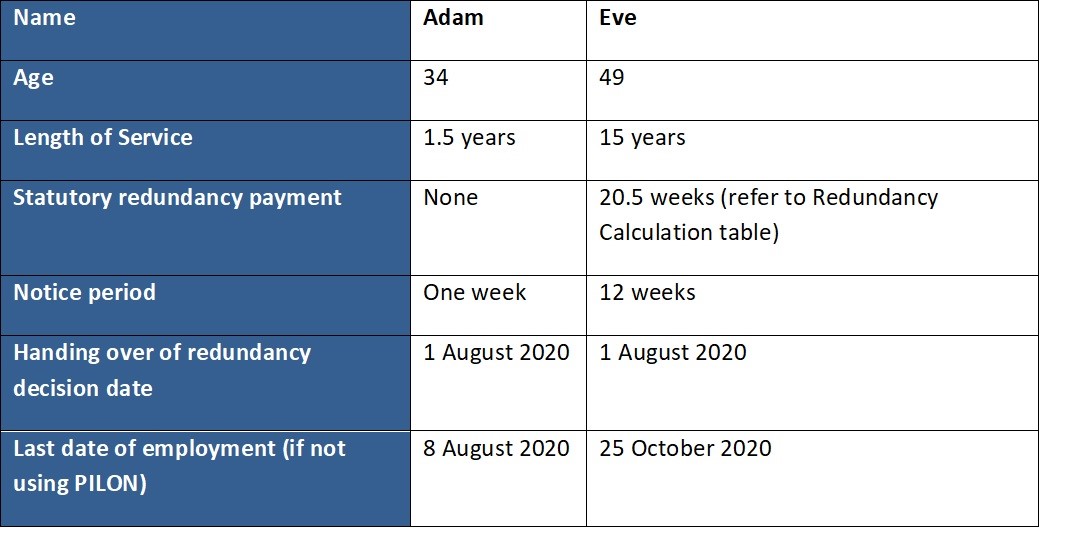Who Pays Redundancy Money? A Comprehensive Guide for Employers and Employees
Who Pays Redundancy Money? A Comprehensive Guide for Employers and Employees
Blog Article
Unloading the Methods for Mitigating Company Redundancy and Enhancing Organizational Durability
In today's vibrant organization landscape, the capacity of organizations to browse challenges and uncertainties is critical for long-lasting sustainability. Mitigating business redundancy and boosting business strength have actually come to be prime focus for leaders aiming to grow and adjust in an ever-evolving market. By diving right into the complexities of critical planning, workforce optimization, and technological combination, companies can not only simplify their operations however likewise strengthen their frameworks to withstand unpredicted disruptions. As we explore the multifaceted approaches used by forward-thinking organizations, a much deeper understanding emerges into the proactive actions important for fostering dexterity and stamina when faced with change.
Assessing Current Business Redundancies
To successfully evaluate existing organizational redundancies within a firm, a detailed review of the existing obligations, roles, and processes is crucial. if a company goes bust who pays redundancy. By carrying out an extensive examination of the different functions and jobs executed within the organization, administration can identify locations where duplication of efforts or inadequacies exist. This evaluation needs to not just concentrate on specific work functions however additionally take into consideration exactly how different departments collaborate and interact
One technique to evaluating redundancies is to evaluate task summaries and duties to pinpoint any kind of overlaps or voids in responsibilities. Additionally, evaluating the process and communication networks can disclose traffic jams or unneeded steps in processes. It is critical to involve employees whatsoever levels during this analysis to gain insights from those directly associated with day-to-day operations.

Applying Agile Workforce Methods
Following a detailed evaluation of current organizational redundancies, the implementation of dexterous workforce methods becomes important for maximizing operational effectiveness and flexibility. Agile workforce approaches entail creating a vibrant and adaptable work atmosphere where staff members can quickly adapt to altering organization needs. One essential aspect of implementing nimble workforce methods is cultivating a culture of constant understanding and development. This involves providing workers with the needed devices, resources, and training to obtain brand-new abilities and expertises. In addition, companies can boost dexterity by promoting cross-functional teams that can easily collaborate and shift focus based upon concern jobs.
An additional crucial component of dexterous labor force techniques is promoting clear interaction and equipping workers to make decisions autonomously within their roles. By decentralizing decision-making procedures, organizations can respond better to difficulties and opportunities. Additionally, adopting dexterous job administration methodologies, such as Scrum or Home Page Kanban, can simplify process and increase efficiency. In general, applying nimble labor force methods can aid business remain competitive in today's swiftly developing business landscape.
Leveraging Technology for Efficiency
Leveraging sophisticated technical services can dramatically boost operational performance within companies seeking to maximize and improve processes resource usage. By incorporating automation devices, expert system, and data analytics, companies can improve process, lower hand-operated mistakes, and make data-driven decisions immediately. Automation can manage recurring jobs, permitting other employees to focus on more calculated efforts, therefore enhancing performance and innovation.
Furthermore, the execution of cloud computing services allows seamless collaboration among employee, despite their physical area. This cultivates interaction, boosts task monitoring, and improves total performance. In addition, using client connection management (CRM) software application can assist companies better understand their consumers' demands, individualize interactions, and ultimately increase consumer contentment and commitment.

Motivating Continual Knowing and Growth
Implementing a society of continual knowing and growth is important for promoting development and adaptability within a dynamic business environment. Encouraging workers to involve in ongoing knowing opportunities not just improves their specific skills however additionally adds to the overall strength of the firm. By prioritizing constant knowing, companies can remain abreast of industry patterns, adapt to technical developments, and remain affordable on the market.
To effectively urge continuous knowing and advancement, companies can establish knowing and advancement programs, use possibilities for upskilling and reskilling, give accessibility to on-line training courses and sources, and develop an encouraging understanding setting. Supervisors play a critical function in promoting a culture of knowing by leading by example, providing feedback and coaching, and identifying and awarding workers' knowing achievements.
Building a Resistant Company Society
Transparent interaction about business changes, difficulties, and successes is crucial in producing a society where workers really feel educated and valued. if a company goes bust who pays redundancy. Furthermore, giving opportunities for expert growth, recognizing and compensating staff members' contributions, and promoting work-life equilibrium are essential components of a resistant company society.
Leaders play a significant role in shaping the society of an organization. By leading by example, showing durability in the face of difficulty, and proactively sustaining their teams, leaders can instill these values throughout the organization. A resistant business society not only aids companies hold up against obstacles however hop over to these guys also cultivates development, improves staff member involvement, and ultimately adds to lasting organizational success.
Verdict
In final thought, the approaches for mitigating company redundancy and improving organizational resilience are critical for maintaining competitiveness in today's dynamic business atmosphere. By analyzing existing redundancies, implementing agile labor force methods, leveraging innovation, urging continuous discovering and growth, and building a resilient company culture, organizations can adjust to alter, boost effectiveness, and foster technology. These aggressive actions will aid firms navigate difficulties, minimize interruptions, and make sure long-term success in the ever-evolving industry.
Adhering to a detailed assessment of current organizational redundancies, the implementation of active workforce techniques becomes important for maximizing operational effectiveness and adaptability - if a company goes bust who pays redundancy. Overall, executing nimble workforce methods can aid companies stay affordable in today's rapidly evolving company landscape
A resistant corporate society not just aids business hold up against difficulties but likewise promotes development, enhances employee involvement, and ultimately contributes to lasting organizational success.

Report this page